Knowledge System Research Group
& Simulator Research Group
KNOWLEDGE SYSTEM & SIMULATOR
The shortage of seafarers has become a significant issue in marine transportation, highlighting the need for acceptable labor-saving and unmanned systems, including those for seafarers. The two groups conduct research on navigational operation support technology using ICT (Information and Communication Technology), and safety evaluation technology for new support systems. In addition, to reduce the number of accidents caused by human factors such as inadequate watch and improper ship operation, which are said to be the causes of the majority of maritime accidents, and to improve the safety of marine transportation, research and development of marine accident analysis technology using SHS (ship-handling simulator) is being conducted.
Members (Knowledge System Research Group)
(◎: Head of the Group)
Members (Simulator Research Group)
(◎: Head of the Group)
Overview of our research
1.Development of Elemental Technologies for Automatic Navigation
〇Technological development related to automatic ship avoidance maneuvering
The two groups are conducting R&D of an algorithm to generate a safe navigation avoidance plan based on the OZT (Obstacle Zone by Target).
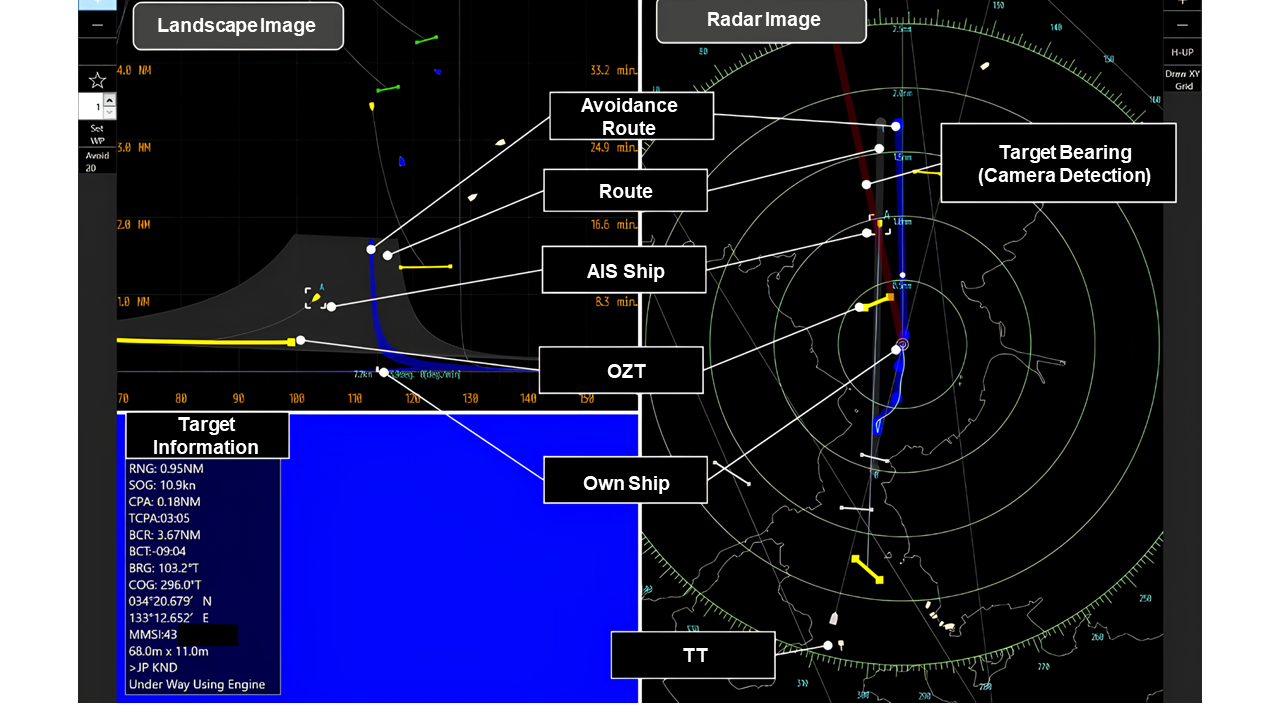
Avoidance maneuvering system information display screen
〇Development of technology for automatic berthing operations
The two groups are conducting R&D on stable berthing maneuvering algorithms, focusing on improving low-speed motion prediction technology and using two-degree-of-freedom control to address wind disturbances during berthing maneuvers.
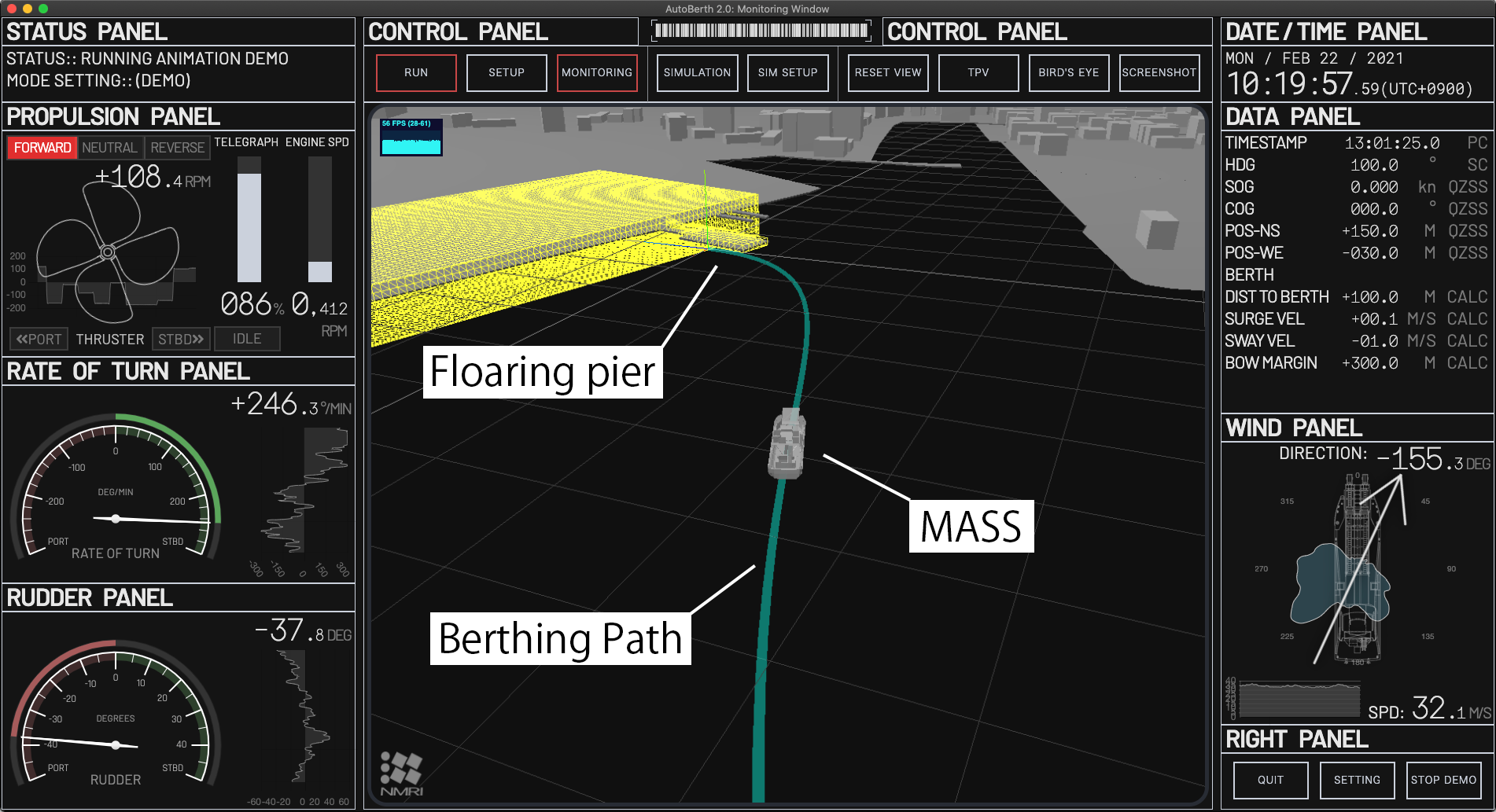
'AutoBerth' automatic berthing software for control and monitoring
〇Technical development of a camera-based monitoring system for other vessels
The two groups are conducting R&D on a system for detecting other vessels using stereoscopic vision and monitoring them with cameras on the small-sized experimental vessel 'Shinpo.' The two groups are also conducting research on the remote monitoring and maneuvering of ship to connect with automatic navigation avoidance systems and to share detected information with land-based systems.
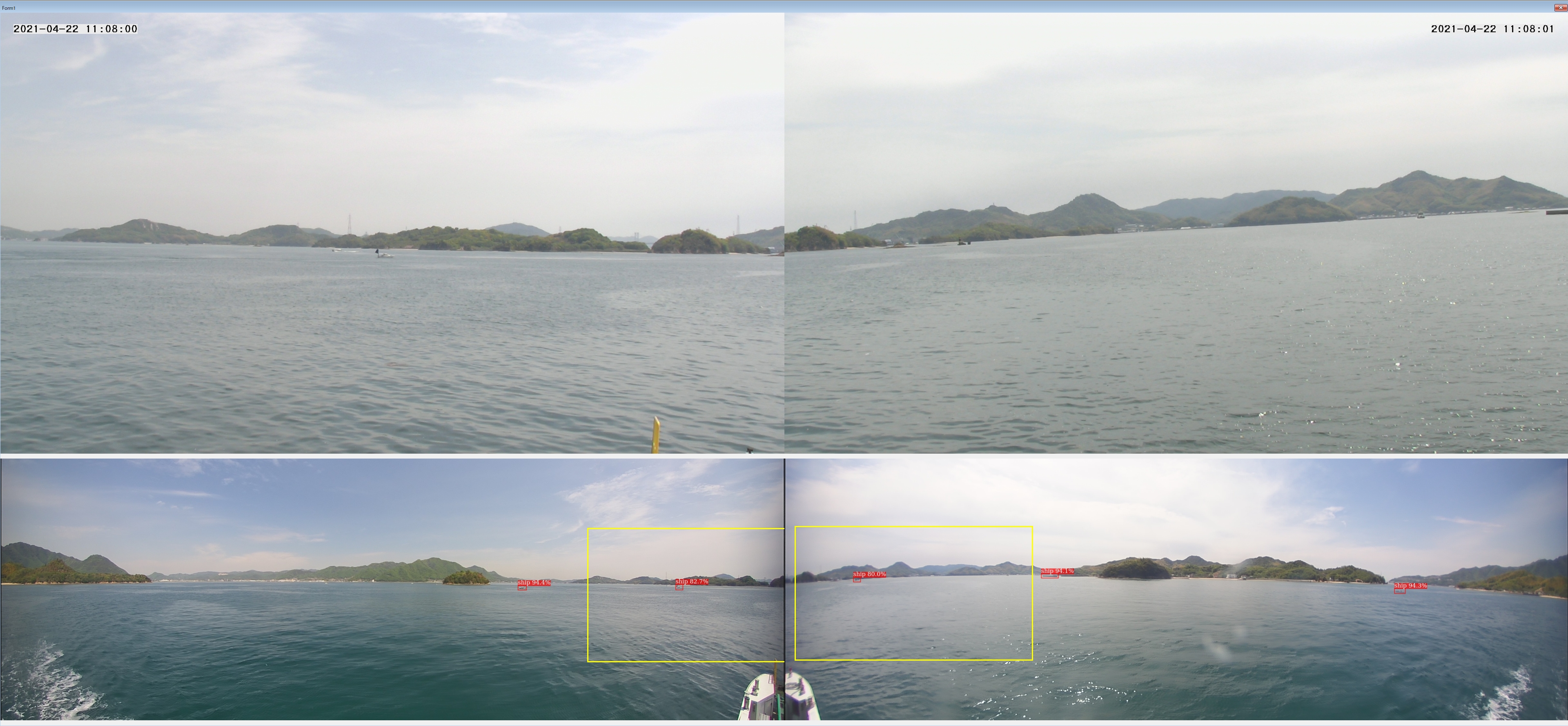
Example of images from a remote ship-handling camera
〇Research on safety evaluation methods for automated systems
The two groups are conducting R&D on evaluations that consider human involvement, such as the evaluation of automatic avoidance maneuvering and automatic berthing/unberthing algorithms and countermeasures against Hazards identified by risk analysis of automatic vessels.
2.Development of a Comprehensive Simulation System
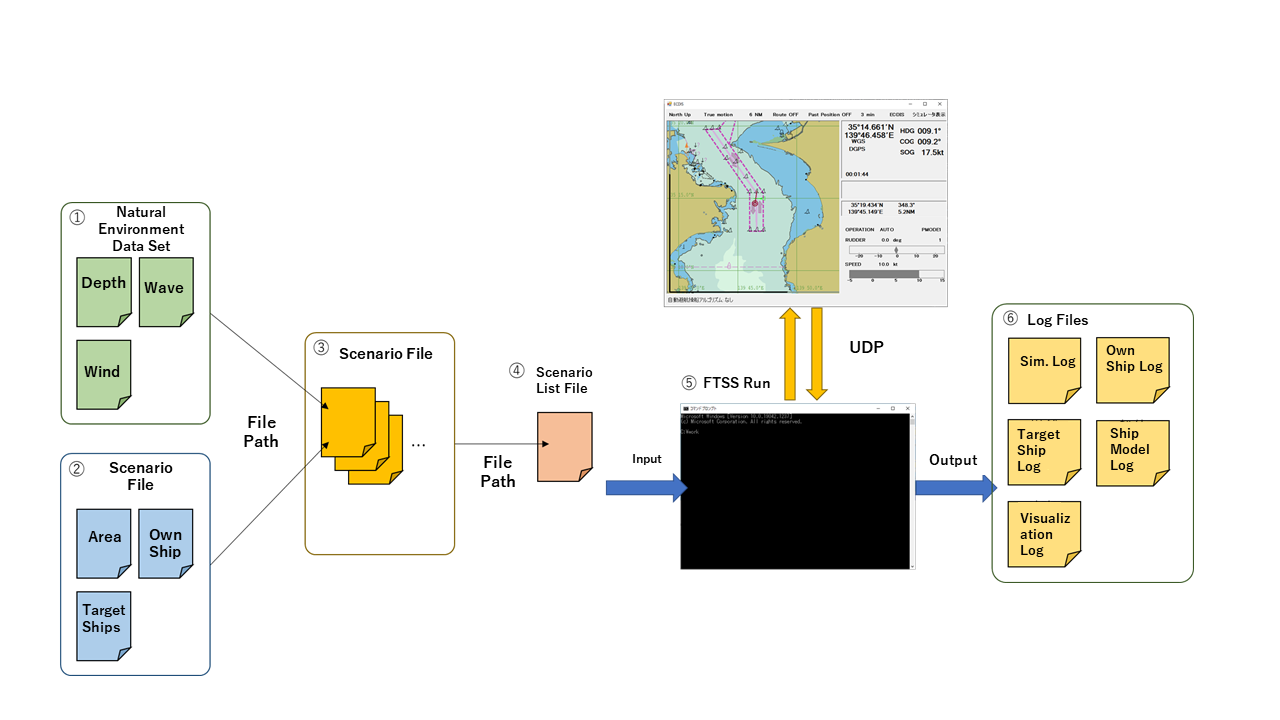
Comprehensive simulation system(FTSS (Fast Time Ship Simulator) image)
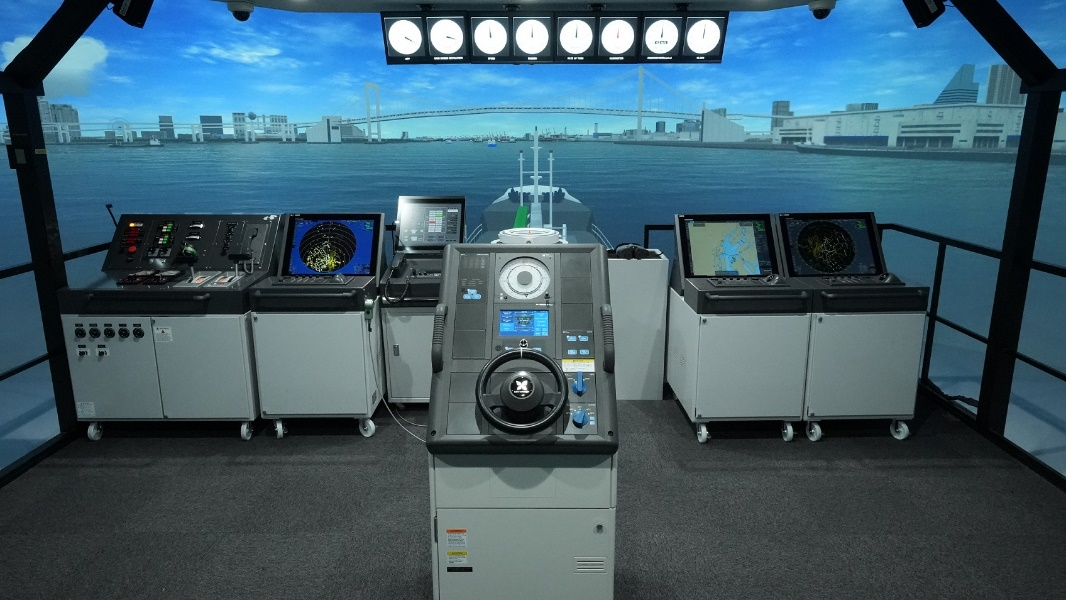
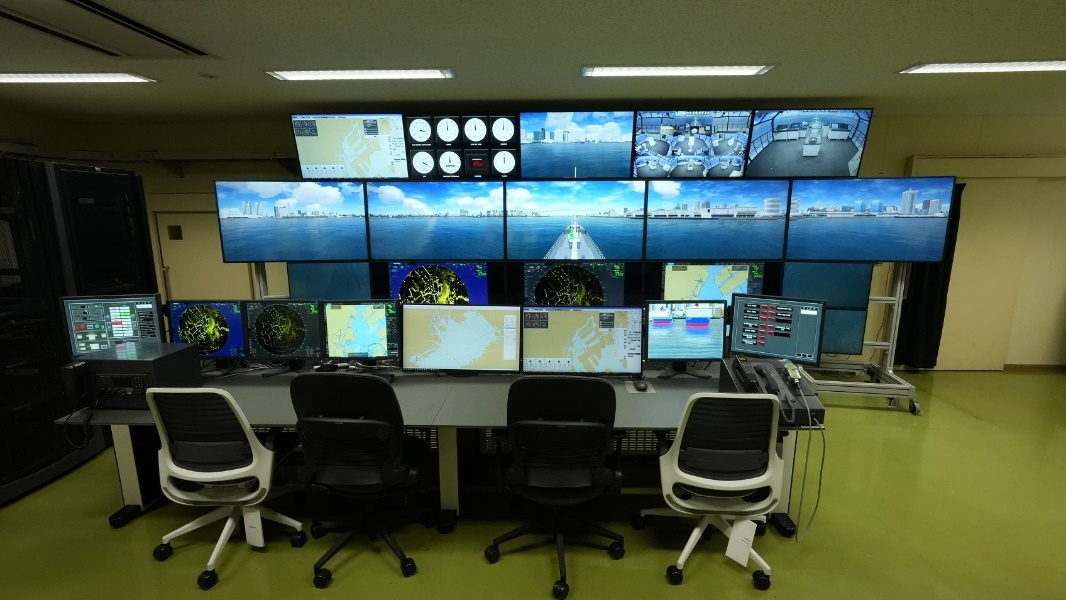
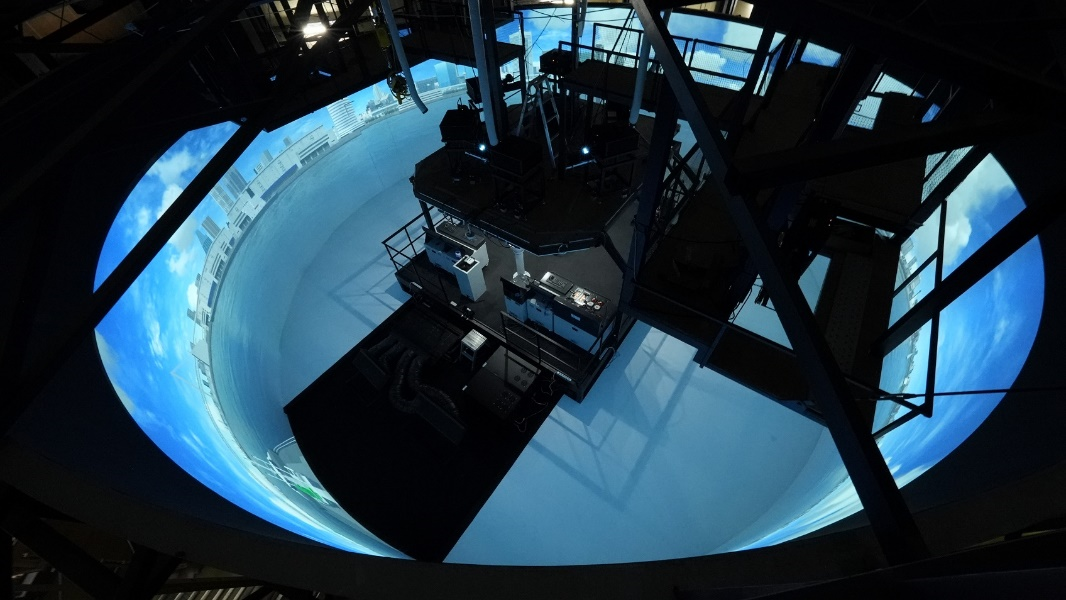
Comprehensive simulation system (SHS (Ship Handling Simulator))
The main facility of the two groups is a Comprehensive Simulation System, which consists of a FTSS (Fast Time Ship Simulator) capable of high-speed simulations and a SHS that simulates the ship-handling environment. The two groups conduct R&D on safety evaluation by linking ship handling automation systems with FTSS and SHS. SHS is equipped with a 13-meter diameter cylindrical screen that realistically reproduces the ship-handling environment, and downward vision screens for the berthing and unberthing. SHS is also equipped with a system for measuring the behavior of the ship's navigators, and a system for collecting their physiological data. It is designed to analyze marine accidents, to develop onboard support devices and navigational equipment, and to evaluate new vessel types in actual sea conditions.
Click here for details of the Comprehensive Simulation System
 Comprehensive Simulation System
Comprehensive Simulation System
